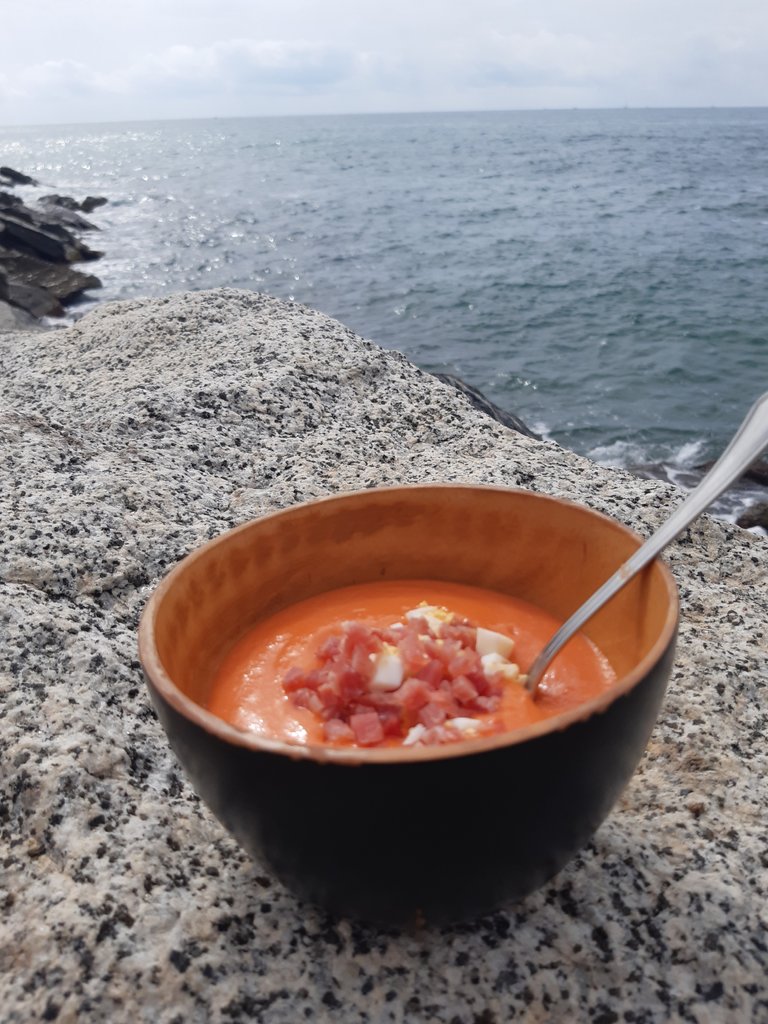
Whether you live in a hot climate country or in a seasonally changing country, the heat is spreading wide across the globe. Nowadays, summers are longer and the heat is more intense. The sea temperature has risen a few degrees and feels more suffocating if we go for a walk. Hydration is no longer a habit but an obligation to keep our body active. And water is not the only way to drink liquids, there are many ways to hydrate and at the same time eat healthy and mainly delicious. Many times we relate hydration only with drinks, but the range of options is huge and very varied. Thanks to this we can expand our diet and find new ways to consume vegetables in a healthy way.
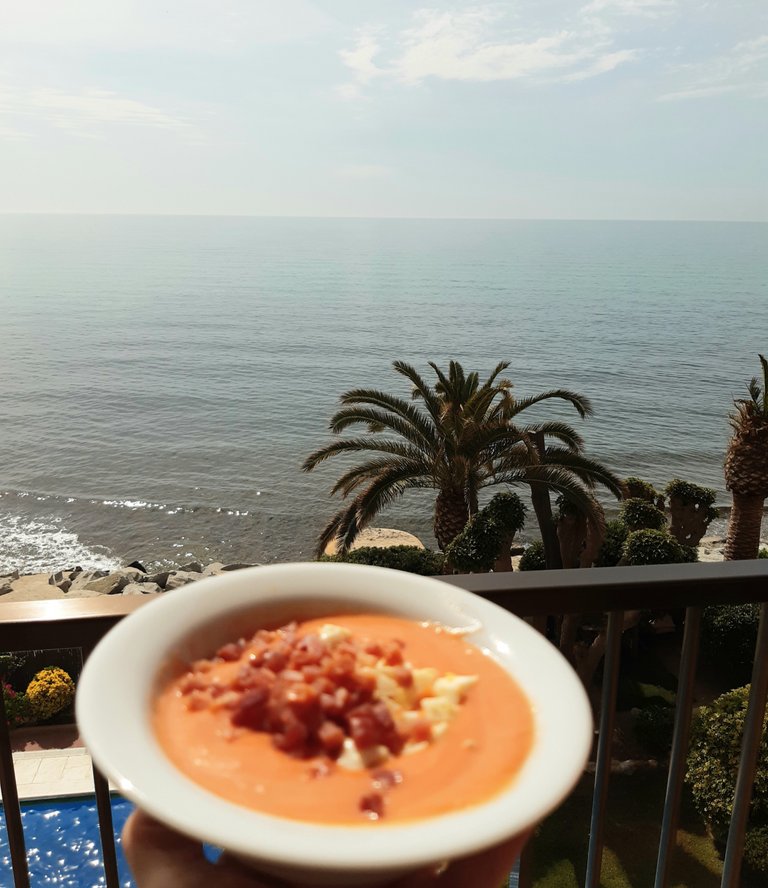
En España -y asumo que en todos los países con cambios climáticos- no se come lo mismo en noviembre que en abril. Algunos platos se mantienen intactos todo el año; sin embargo, hay matices con ciertos alimentos. Todo se ajusta por el clima.
Vivo en Barcelona y hace unos años conocí a una cordobesa que también se había mudado a esta ciudad. Estudiábamos catalán juntas. Al terminar el curso, la profesora nos pidió que llevásemos un plato típico de nuestros países o regiones para compartir. Cada quién llevó lo que consideró más representativo de su tierra. De ese encuentro multicultural descubrí la comida -y receta- que les presentaré en este post: El Salmorejo cordobés.
Al principio confieso que no me resultó llamativa esa crema roja pero, una vez que lo probé me enamoré. No existe un día de cada semana entre la primavera y el verano que no lo prepare, desde los últimos siete años para acá. Es un sabor tan exquisito que no comprendo por qué no es tan conocido.
Es bastante común haber escuchado del gazpacho andaluz (o gazpacho español), el salmorejo es un plato similar pero con ciertos matices. Las diferencias se basan en algunos de los ingredientes que se utilizan para cada preparación y, entre las semejanzas se encuentran que ambos son de Andalucía, los dos llevan como ingredientes principales el pan y el tomate y, se consumen en épocas calurosas. Aunque he probado el gazpacho y también lo preparo, yo prefiero el salmorejo cordobés.
Su creación se remonta a los tiempos romanos, por costumbre se trituraba el pan con otros ingredientes quedando una salsa con la que se aderezaban algunos alimentos. Con la llegaba de Colón al continente americano se introdujo en España el uso del tomate y luego de algunas modificaciones, la receta final quedó como se conoce desde hace poco menos de un siglo. Esta receta se imparte en cátedras de gastronomía en la región de Andalucía. El resultado es una salsa o crema suntuosa muy fresca que tiende a servirse en España como primer plato.
Su elaboración es bastante sencilla, lo único en donde debes hacer incapié es que los tomates estén maduros y que tengas una buena licuadora que triture de forma potente o un ayudante de cocina. El salmorejo es una crema que debe quedar suave, delicada, sin grumos, ni restos de tomate o de pan.
In Spain, and I assume that in all countries with climate changes, the same food is not eaten in November as in April. Some dishes are kept intact all year round; however, there are nuances with certain foods. Everything is adjusted by the climate. I live in Barcelona and a few years ago I met a woman from Cordoba who had also moved to this city. We studied Catalan together. At the end of the course, the teacher asked us to bring a typical dish from our countries or regions to share. Each one carried what we considered most representative of our lands. From that multicultural encounter I discovered the food -and recipe- that I will present in this post: The Cordovan Salmorejo.
At first I confess that this red cream was not appealing to me, but once I tried it I fell in love. There is not a day of every week between spring and summer that I do not prepare it, from the last seven years to here. It is such an exquisite flavor that I do not understand why it is not so well known.
It is quite common to have heard of Andalusian gazpacho (or Spanish gazpacho), Salmorejo is a similar dish but with certain nuances. The differences are based on some of the ingredients that are used for each preparation and, among the similarities are that both are from Andalusia, both carry bread and tomato as main ingredients and, are consumed in hot weather. Although I have tried gazpacho and also prepare it, I prefer the Cordovan Salmorejo.
Its creation dates back to Roman times, by custom bread was crushed with other ingredients remaining a salsa with which some foods were seasoned. With the arrival of Columbus to the American continent the use of tomato was introduced in Spain and after some modifications, the final recipe remained as it has been known for a little less than a century.
This recipe is taught in gastronomy chairs in the region of Andalusia. The result is a very fresh sumptuous sauce or cream that tends to be served in Spain as a first course.
Its preparation is quite simple, the only thing where you should make emphasis is that the tomatoes are ripe and you have a good blender that crushes powerfully or a kitchen assistant. Salmorejo is a cream that should be soft, delicate, without lumps, or traces of tomato or bread.

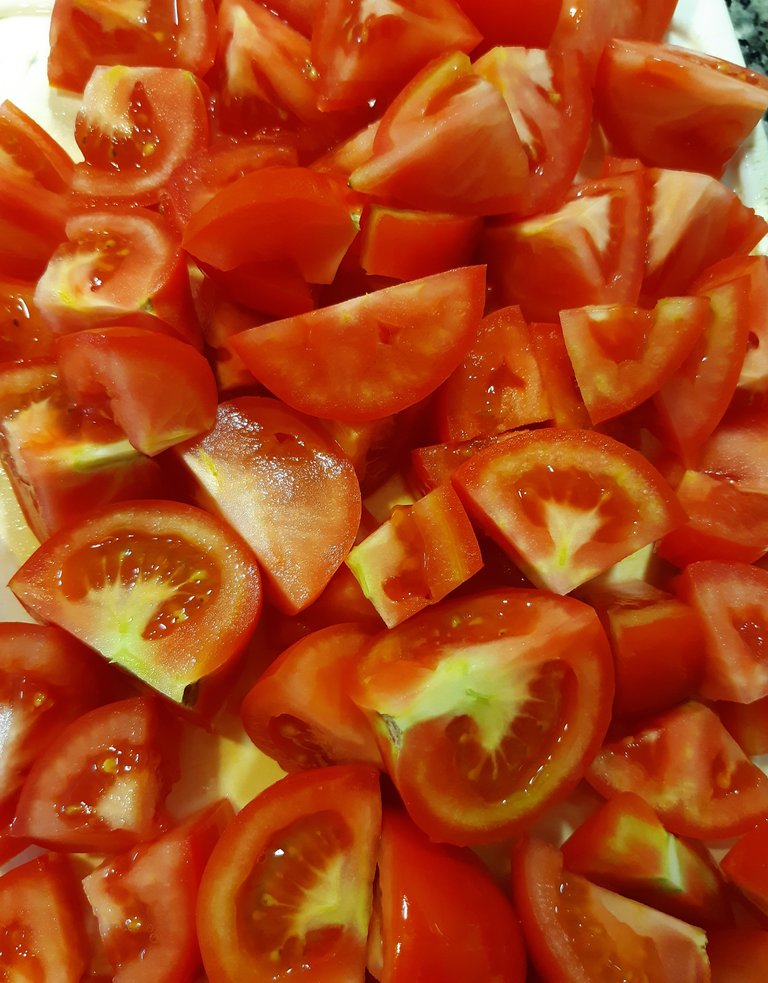 | 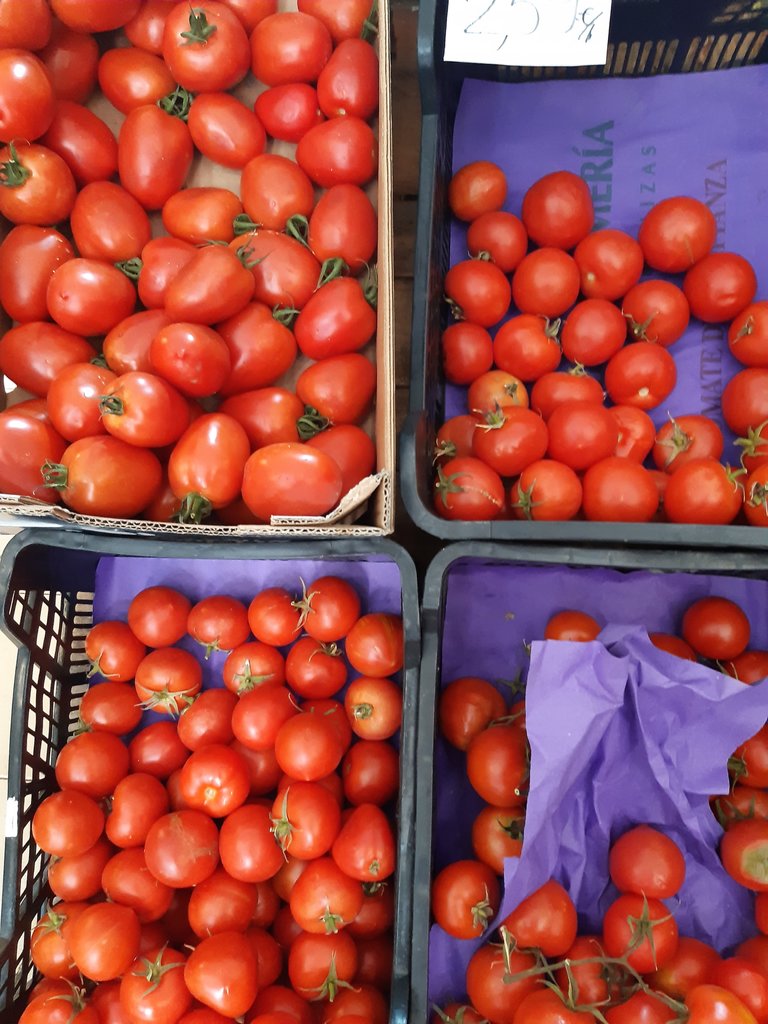 |
|---|
Ingredientes
Un kilo de tomates maduros (dan más sabor)
150 grs de aceite de oliva
Un diente de ajo (yo utilizo medio, depende de cada gusto).
30 grs de vinagre (el de tu agrado, yo uso vinagre de vino blanco).
150 grs de migas de pan.
Jamón serrano en cuadritos pequeños
Huevo duro troceado muy pequeño
Una pizca de sal (o cucharadita, esto también es a gusto).
Ingredients
A kilo of ripe tomatoes (they give more flavor)
150 grams of olive oil
A clove of garlic (I use medium, it depends on each taste).
30 grams of vinegar (the one you like, I use white wine vinegar).
150 grams of bread crumbs.
Serrano ham in small squares
Hard-boiled egg, chopped very small
A pinch of salt (or teaspoon, this is also to taste).
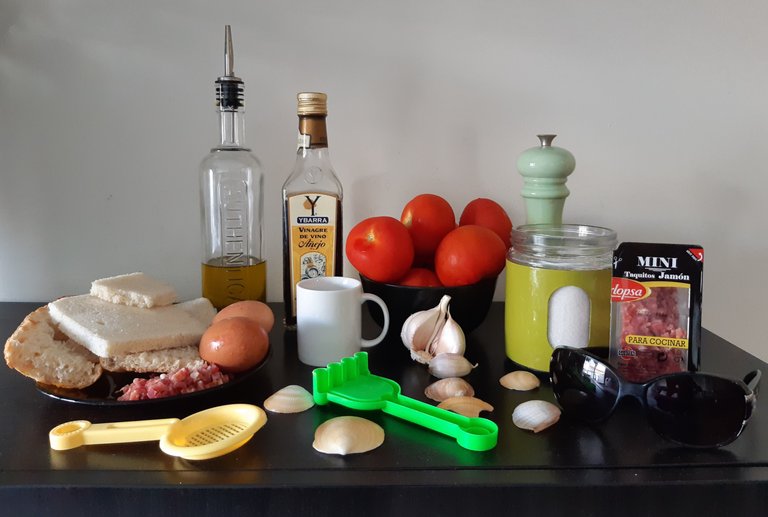
Preparación
Lo primero que se debe hacer es sancochar los huevos y al estar listos picarlos muy pequeños. Para el jamón, también lo puedes cortar en cuadrados; sin embargo, existen supermercados en donde los venden ya cortados. Luego de tener troceado estos dos ingredientes se colocan aparte. Serán utilizados al final como decoración del salmorejo.
En un vaso de un asistente de cocina (o una licuadora para quien la tenga) colocas los tomates, el ajo y la sal y trituras todo para mezclarlo bien a un nivel medio. Si tienes una licuadora pequeña puedes ajustar las medidas y utilizar 500 grs de tomates en vez de 1000 e ir recalculando el resto de ingredientes. Una vez que esta unido, se le añaden las migas de pan y el vinagre, triturando a una potencia media por menos de un minuto. Luego de unir estos ingredientes vuelve a triturar por poco más de un minuto a velocidad alta. Esto para que se mezcle bien la preparación.
Baja la crema de las paredes con una espátula (yo tengo de silicona y va bastante bien) tratando que la mezcla quede en el fondo del vaso. Colocas a una potencia media y por aproximadamente un minuto comienzas a introducir el aceite de oliva muy poco a poco dejándolo caer en forma de hilo. Debes realizar este paso muy despacio para que la mezcla se una de forma correcta. Si puedes ir agregando el aceite al mismo tiempo que el minuto va corriendo mejor, así lograrás que la preparación emulcione de forma adecuada. Es importante ir vertiendo el aceite de poco a poco.
Por lo general en un asistente de cocina (yo uso la Thermomix) la mezcla obtiene la textura deseada desde el primer momento. Con la licuadora se debe ir probando hasta alcanzar la textura cremosa y sueva del salmorejo. Una vez que esta lista debe refrigerarse porque, este plato se come frío.
Preparation
The first thing to do is boil the eggs and when they are ready, chop them very small. For the ham, you can also cut it into squares; however, there are supermarkets where they sell them already cut. After having these two ingredients chopped, they are placed separately. They will be used at the end as decoration of the Salmorejo.
In a kitchen assistant glass (or a blender for whoever has it) place the tomatoes, garlic and salt and grind everything to mix well at a medium level. If you have a small blender you can adjust the measures and use 500 grams of tomatoes instead of 1000 and recalculate the rest of ingredients. Once it is joined, bread crumbs and vinegar are added, crushing at an average power for less than a minute. After joining these ingredients, grind again for a little more than a minute at high speed. This is so that the preparation is mixed well.
Lower the cream from the walls with a spatula (I have a silicone one and it works quite well) trying to get the mixture to remain at the bottom of the glass. You place at a medium power and for approximately one minute you begin to introduce the olive oil very little by little, letting it fall in the form of a thread. You must perform this step very slowly so that the mixture unites correctly. If you can add the oil at the same time as the minute runs better, then you will ensure that the preparation emulsifies properly. It is important to pour the oil little by little.
In general, in a kitchen assistant (I use the Thermomix) the mixture obtains the desired texture from the first moment. Prove with a blender until you reach the creamy and smooth texture of the Salmorejo. Once this list must be refrigerated because, this dish is eaten cold.
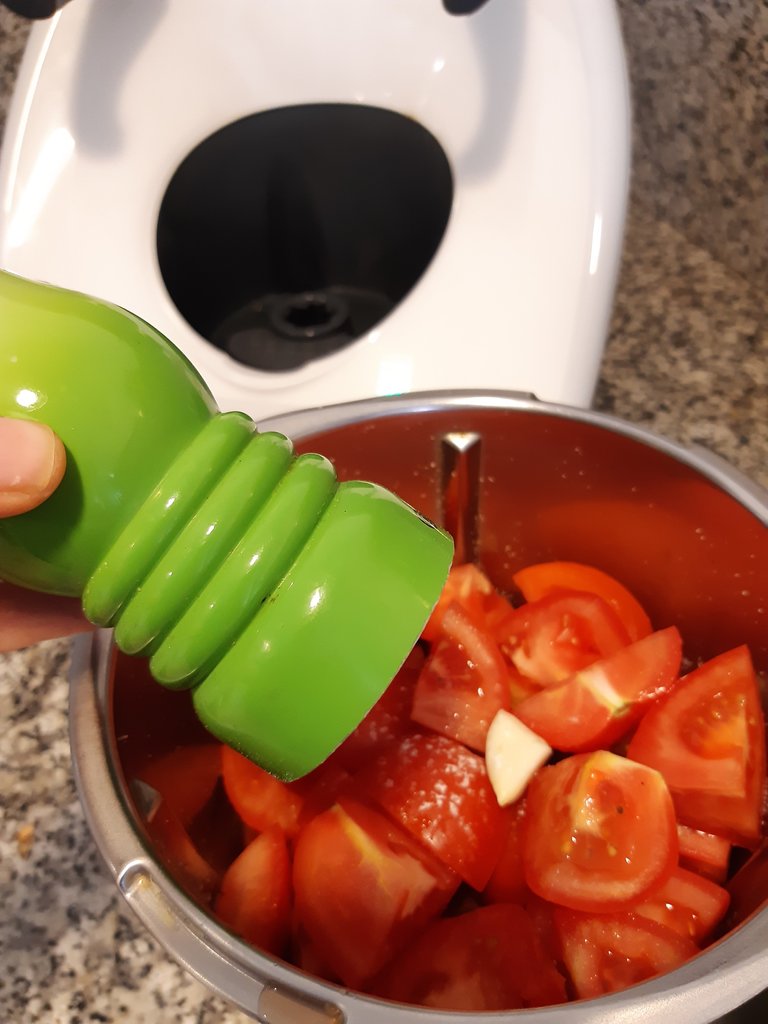 | 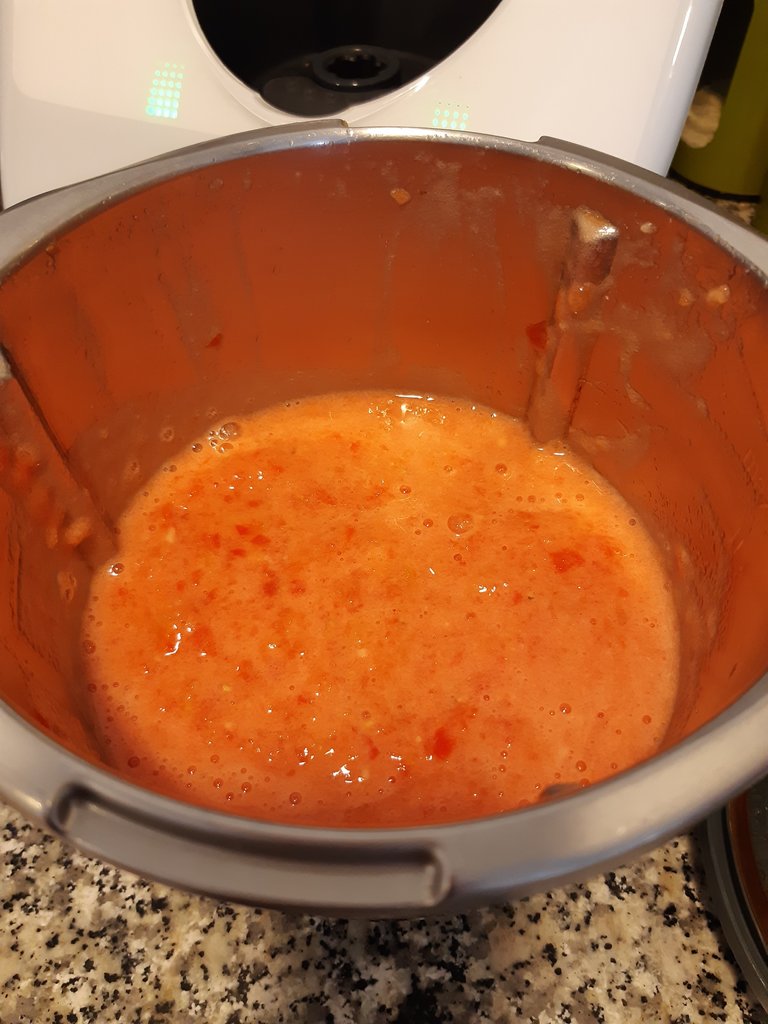 | 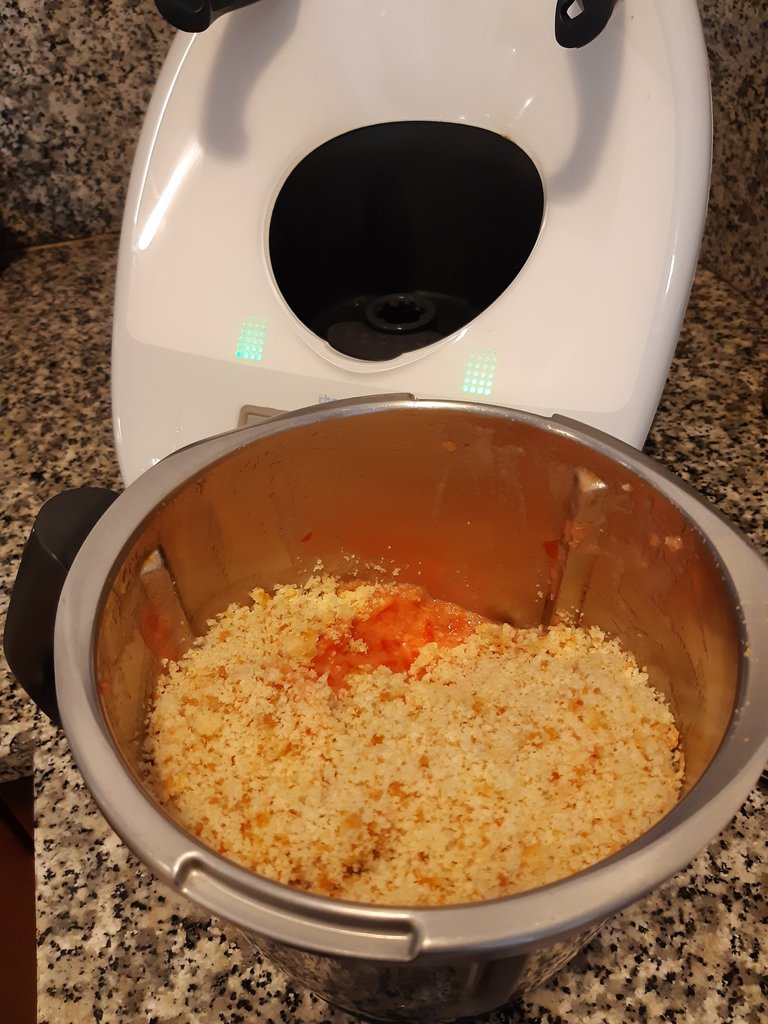 |
|---|
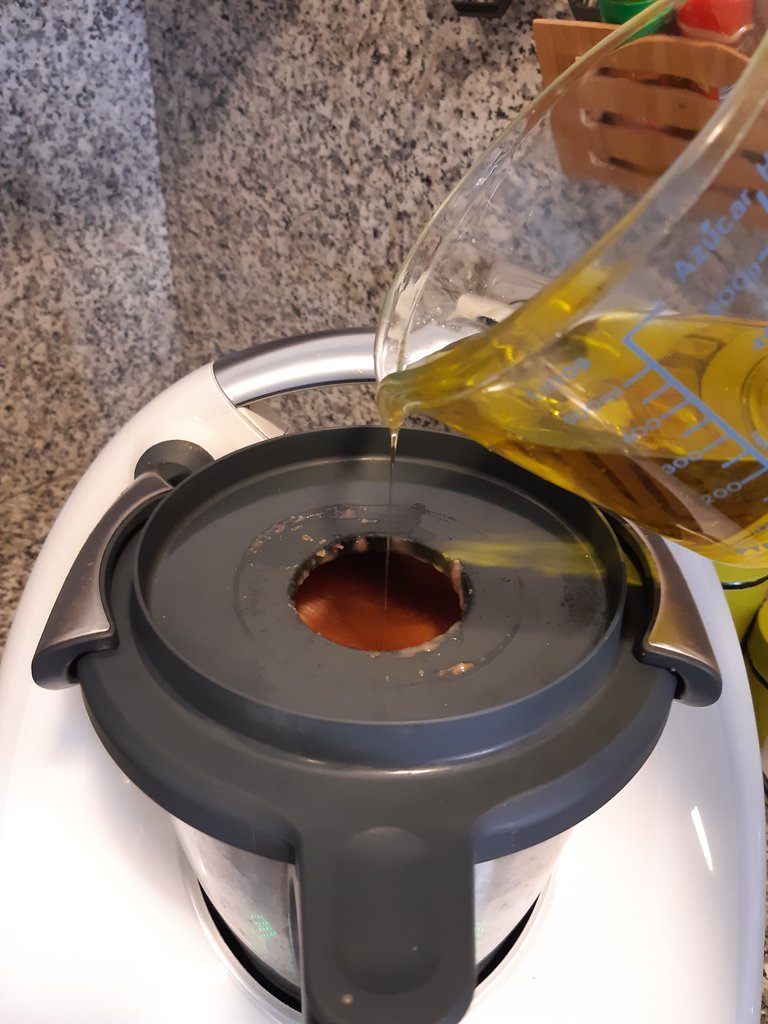 | 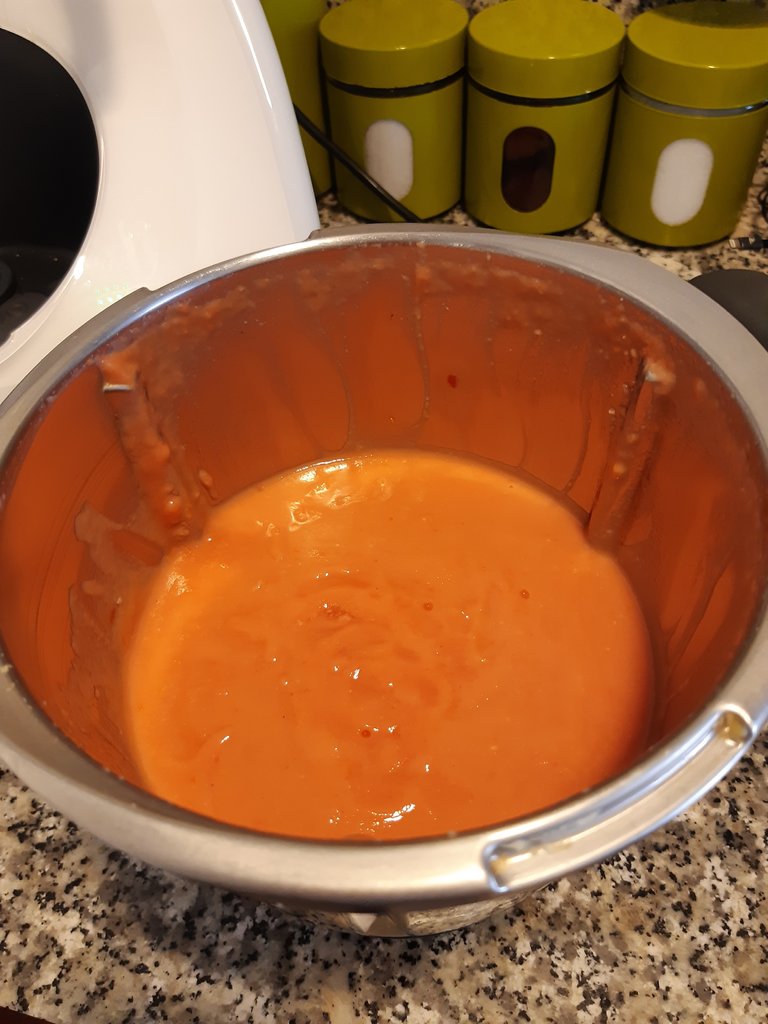 | 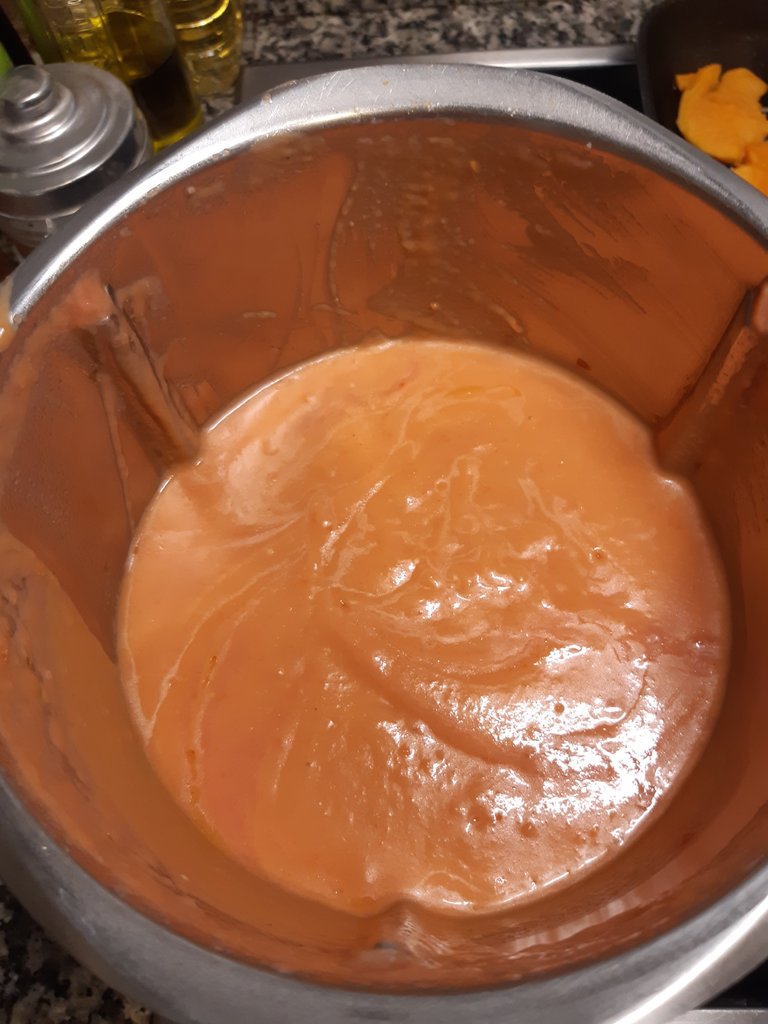 |
|---|
Al servirlo colocas una porción en la fuente seleccionada y le añades el huevo duro troceado y el jamón picado previamente. Siempre se acompaña con esas dos proteínas.
Esta comida es muy refrescante, sana y balanceada. Y es una forma de introducir dentro de nuestra alimentación un plato con historia, con cultura y del que los cordobeses se sienten muy orgullosos. ¡Buen provecho!.
In general, in a kitchen assistant (I use the Thermomix) the mixture obtains the desired texture from the first moment. Prove with a blender until you reach the creamy and smooth texture of the Salmorejo. Once this list must be refrigerated because, this dish is eaten cold.
When serving it, place a portion in the selected dish and add the chopped hard-boiled egg and previously chopped ham. It is always accompanied with those two proteins.
This meal is very refreshing, healthy and balanced. And it is a way of introducing into our diet a dish with history, with culture and of which the people of Cordoba are very proud. Enjoy!
 | 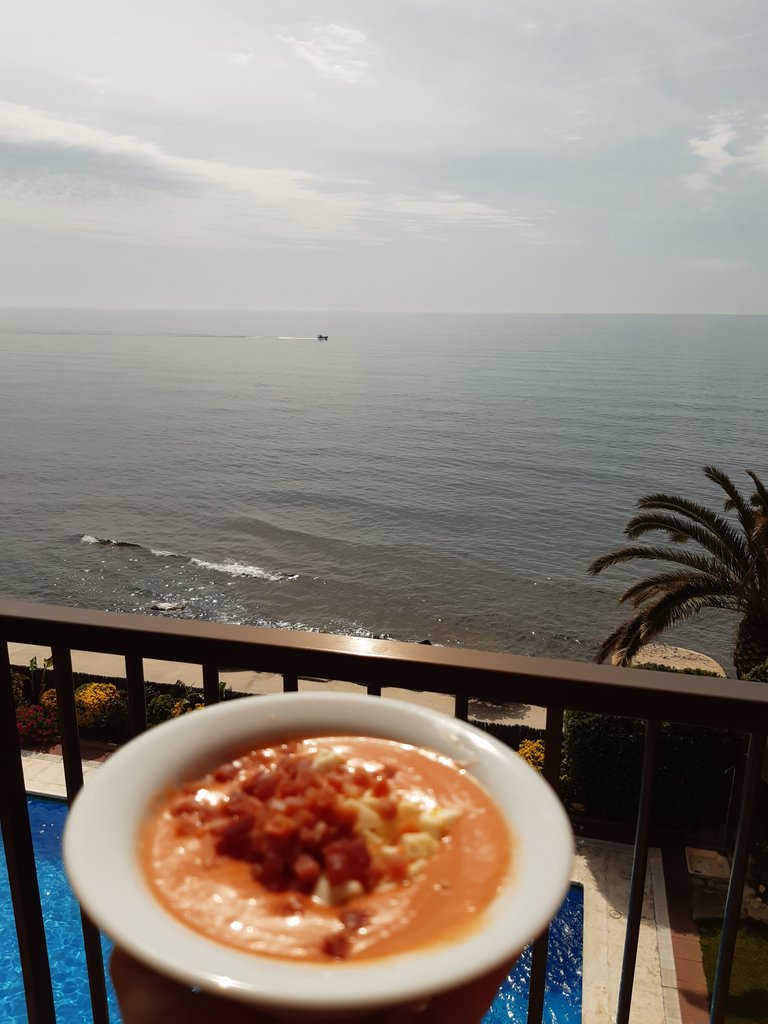 |
|---|
Todas las fotos son de mi propiedad.
All the pictures used are personals.
Excelente!! 😃
Me encanta el salmorejo y el post, genial! Amé la introducción y las Imágenes 😊
Buenísima receta! 👍🏼
¡Gracias!